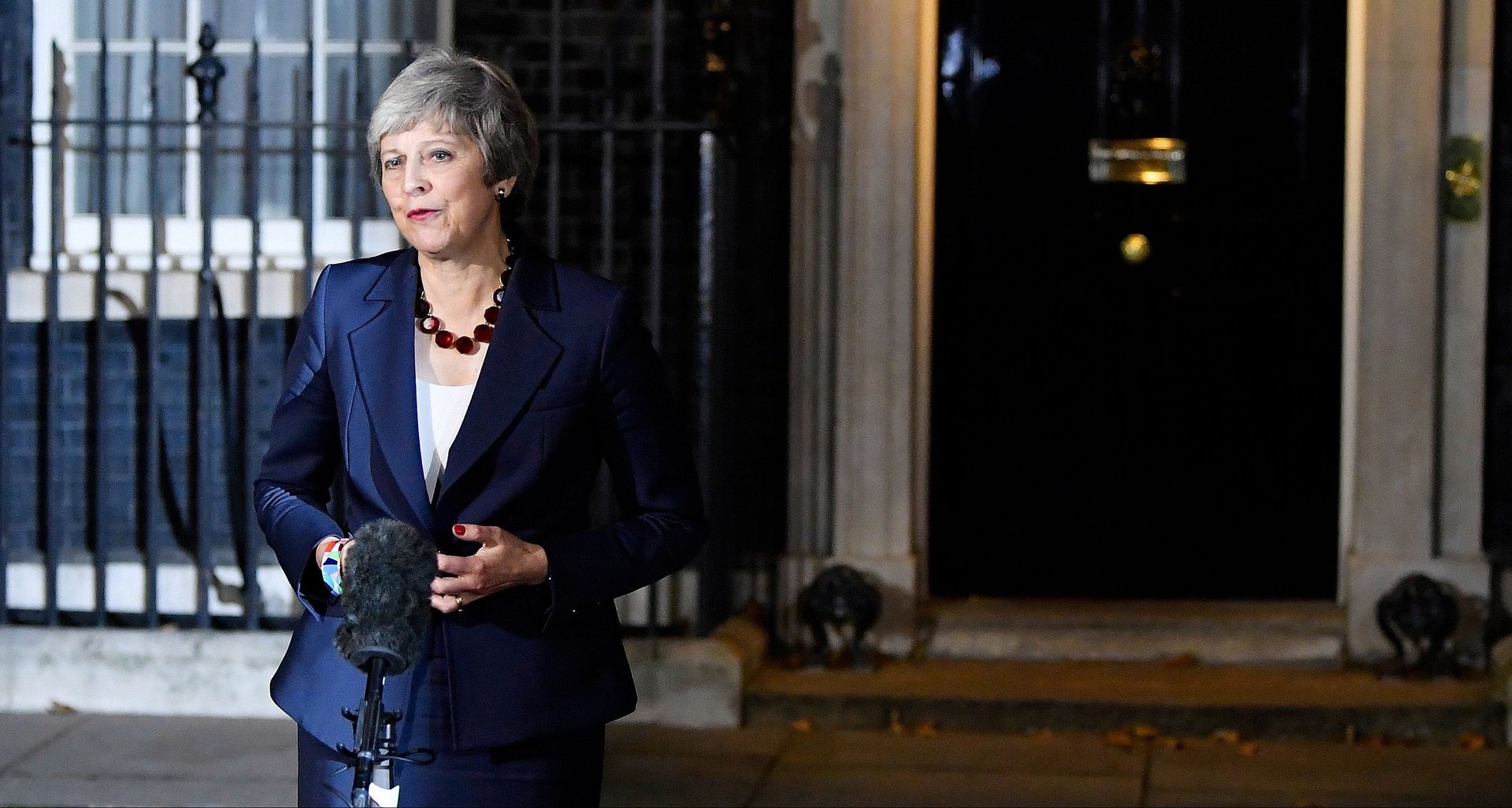Five things to know about the new Brexit deal
It’s 585 pages of legalese—and an awful lot of it is still to be determined. Yet now, after nearly 20 months of negotiating and renegotiating, hand-wringing and back-stabbing, plotting and scheming, UK prime minister Theresa May and the EU have finally reached a draft agreement about how Brexit could roll out.


It’s 585 pages of legalese—and an awful lot of it is still to be determined. Yet now, after nearly 20 months of negotiating and renegotiating, hand-wringing and back-stabbing, plotting and scheming, UK prime minister Theresa May and the EU have finally reached a draft agreement about how Brexit could roll out.
It’s not the hardline out-means-out that Nigel Farage and other Brexiteers originally campaigned on. It’s also not quite as EU-friendly as Remainers might have hoped. In any case, as May told journalists today (Nov. 14), it’s this draft, or nothing. “The choice was this deal, which enables us to take back control and build a brighter future for our country,” she said, “or going back to square one, with more division, more uncertainty, and the failure to deliver on the referendum.”
That, at least, will likely be the key strategy for making the case to Parliament over the next few weeks. Here are some key points from the draft:
1. EU citizens won’t need a visa to visit the UK
And British citizens won’t need a visa to go on holiday or visit any EU country, though they will need a passport. (Whether EU citizens will be able to continue to travel on ID cards alone remains to be seen.) Visitors will likely be limited to 90-day trips, with no right to work while they’re there. They may also have to be able to prove that they can support themselves while they’re there, and possibly that they’ve booked a return ticket.
2. People likely won’t be booted out of their homes
The draft protects EU citizens in the UK and UK nationals in the EU, ensuring they can continue working and living much as they do now.
3. Britain will remain part of a ”single customs territory,” with no hard border with Ireland
The UK has until the end of 2020 (or longer, if it asks for it) to work out some kind of mutually agreed-upon trade deal between itself and the EU. Until it does, it will remain in a single customs union with the EU, preventing the cliff-edge tumble investors may have feared—and a hard border between the kingdom’s Northern Ireland and the Republic of Ireland.
4. The “transition period” could be as long as 80 years
There had been a previous agreement that the transition period would end in 2020. But there’s room to extend it—and by more than just a couple of years., according to the draft. The deadline was written as the weirdly specific yet indistinct “31 December 20XX,” theoretically giving a maximum possible space for wriggling of 81 years, up to 31 December 2099. That open-ended blank will need to be filled in.
5. Pet passports will still be valid
Finally, an answer to the question we’ve all been waiting for.